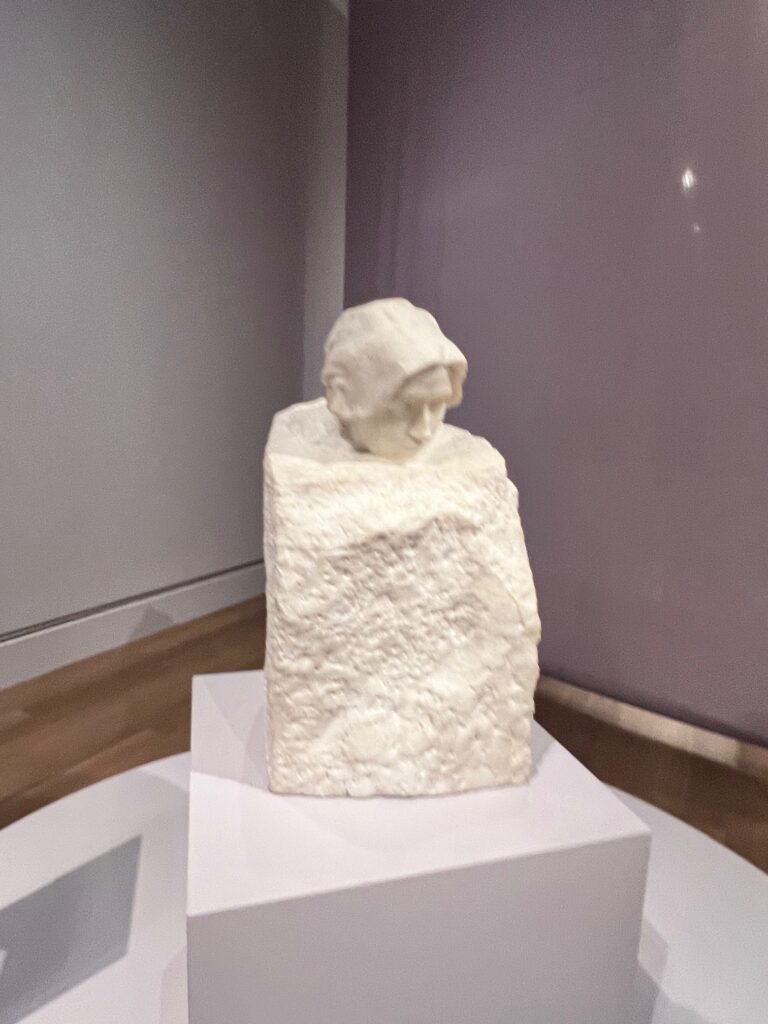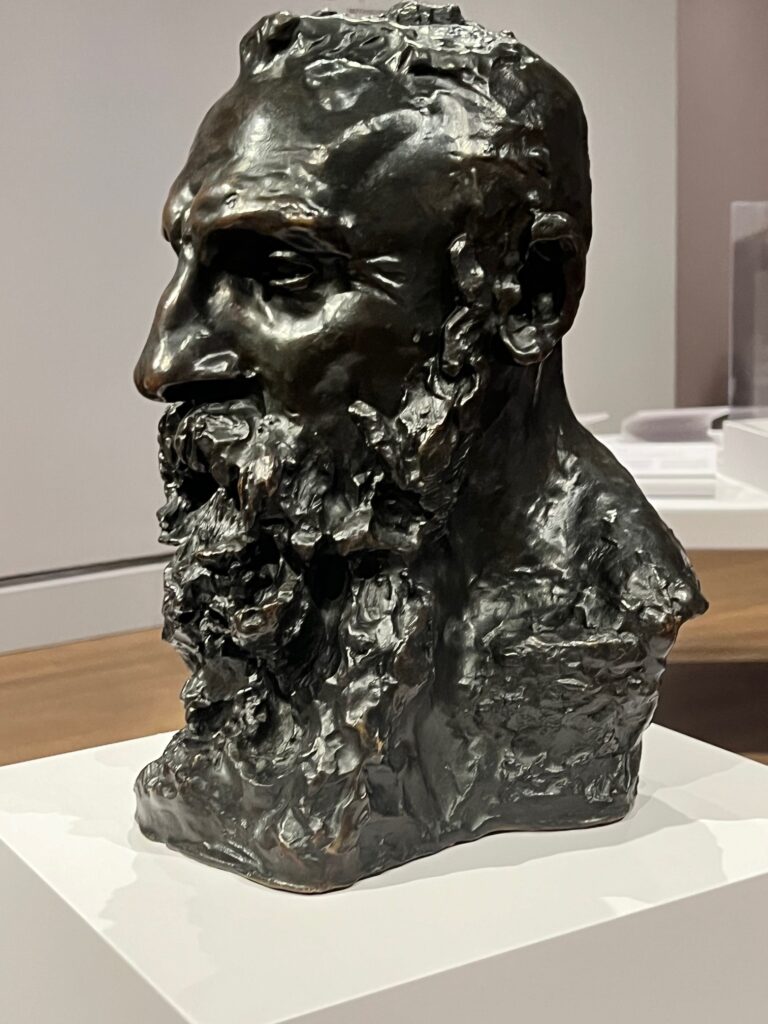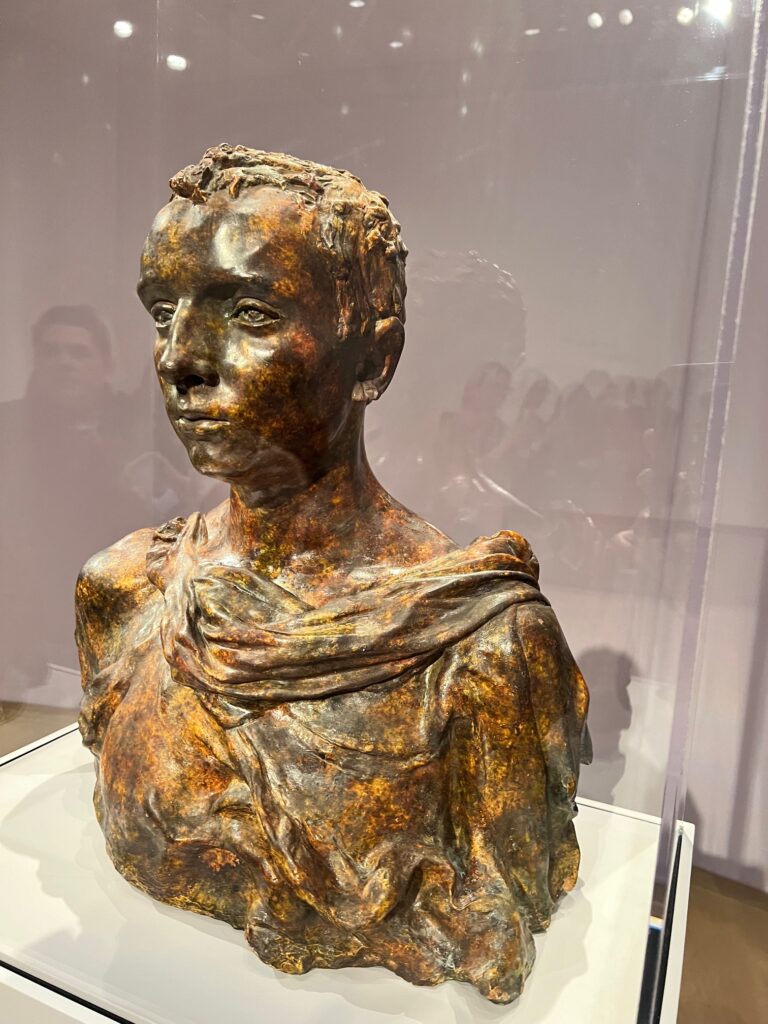Cultural Cocktail Hour
Review: “Camille Claudel” at the Getty Center: An Artist gets her due
(On view daily Through July 21st)
by Leticia Marie Sanchez
The Camille Claudel exhibit at the Getty Center is a rare opportunity to see an astounding collection of Camille Claudel sculpture. It is the first time in more than three decades that this work has been seen together outside of France. This remarkable collection traveled first to the Art Institute of Chicago and then to the Getty Center in Los Angeles, which is the last stop on the American tour. So run, do not walk to Brentwood.
This exhibit is ground-breaking for many reasons, not least of which, is the fact that it visually dispels the fallacy that Claudel was in the shadow of Rodin, artistically speaking. Although she was unjustly discarded to an asylum by her mother and brother (who felt that a female artist was scandalous and improper), her works speak for themselves. The value of an Encyclopedic museum like the Getty is that in the various rooms of the expansive exhibit, the museum goer can see for themselves, side by side, the works of Claudel and Rodin. Just viewing the works one appreciates the formidable talent of Claudel, who was often mistakingly relegated to the role of mistress and muse, rather than a powerful artist in her own right.
One contrasting pair that especially stood out to me was the depiction of the beloved and how it differed in the two artists.

Rodin paints Claudel as a one-dimensional allegory. He entitled the work “Thought.” It was a rather detached depiction of Claudel. Small and aloof, his mistress’ head barely emerges from the rock.

In contrast, the level of detail in Claudel’s “Bust of Rodin” displays her mastery of sculpture, both on a tactile and emotional level. Rodin’s dazzling beard is a craggy rock-face base, rendering him one with nature.
Another highlight was this Young Roman. Claudel purposefully created him to be a polychrome sculpture, to look as if he had been dragged from the sea. Impacted by 15th century Florentine sculpture, Claudel puts her own spin on the work with the use of paint adding a historical dimension.

Artist:
Camille Claudel
French, 1864-1943
After Claudel’s family cruelly placed her in an asylum she never created another work of art.
The exhibit is bittersweet. One cannot help but wonder what treasures Claudel could have created had she not been locked away. Yes, there is also a profound satisfaction in seeing the abundance of powerful works in gallery after gallery at the Getty exhibit. Camille Claudel finally gets her due.













